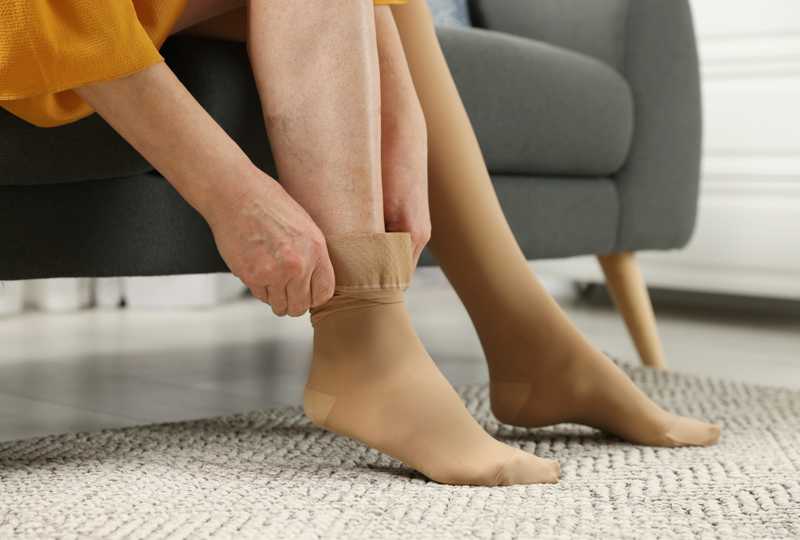Learn what causes these conditions, what you can expect in terms of treatment — and why every person undergoing cancer surgery needs to know their options.
Although they have similar names and both involve swelling in the legs and arms, the conditions lymphedema and lipedema are distinct medical conditions. However, they can be related to each other. If you’ve been diagnosed with one or both conditions or are concerned you may be experiencing symptoms, here’s what you need to know about their treatment. The topic of lymphedema is especially important for breast cancer patients.
“Both conditions really need a multidisciplinary team approach,” said Dr. Huseyin Karagoz, a surgeon with Vanderbilt Plastic Surgery. “We have a broad team at Vanderbilt to take care of the different disease stages.”
What is lymphedema?
“Lymphedema is a condition in which patients experience swollen arms or legs after some kind of lymphatic injury, trauma or surgery,” Karagoz said. Lymphedema is common after breast cancer treatment, for example, but other surgeries can cause it as well. The condition can also occur without explanation, or it can be related to a congenital issue.
How is lymphedema treated?
The main treatment is lymphedema therapy. This type of therapy is provided by Physical Medicine and Rehabilitation services with certified lymphedema therapists.
“We have different surgical options,” Karagoz added, “including microsurgeries and debulking surgeries, such as liposuction.” Microsurgery involves creating a bypass pathway for the lymphatic fluid to drain. Debulking procedures reduce the size of the affected area, which can help improve quality of life.
In some cases, lymphedema related to breast cancer treatment can be prevented with immediate lymphatic reconstruction during the same surgery to remove the cancer, Karagoz said.
“All patients should know this before they go in for their cancer surgery.”
Breast cancer surgeries, such as lumpectomies and mastectomies, often involve an axillary node dissection to determine if the cancer has spread to the lymph nodes. About 33% of patients with breast cancer will develop lymphedema after dissection and radiation therapy.
“When the breast cancer surgeon finishes their procedure,” Karagoz said, “before patients wake up, we repair the lymph vessels, creating our bypass.” The repair helps to significantly reduce the risk of lymphedema, changing the prevalence of the condition from 33% to about 7%.
“All patients should know this before they go in for their cancer surgery,” Karagoz added.
What is lipedema?
“Lipedema is disproportionate adipose tissue (fat) deposition on different areas of the body,” Karagoz explained. Often it occurs on the lower extremities, but it may occur in the upper extremities as well.
“The areas are painful and resistant to weight loss,” he added. “You cannot get rid of this deposition with exercise or diet.”
How is lipedema treated?
The main treatment option for lipedema is liposuction. Liposuction removes the adipose tissue. The procedure is followed with compression therapy to maintain shape.
How are lymphedema and lipedema related?
Although these are different conditions, lipedema can lead to lymphedema. Also, lymphedema can stimulate the accumulation of adipose tissue in the later stages of the disease, Karagoz explained.

Vanderbilt Plastic Surgery
Vanderbilt’s Lymphedema and Lipedema Team therapists, plastic surgeons, vascular medicine specialists and radiologists all work together to personalize care plans for each patient’s unique needs.




